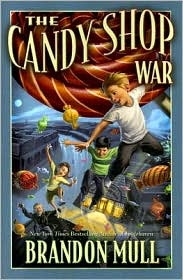One of TheRoomDad’s best friends, affectionately known as Uncle Burrito at our house, visited a few months back and asked me about book recommendations for his 2nd grader. His daughter is a crazy good reader and not only finishes books at mock speed, she also reads at a level that is much higher than an average 8 year old. He said that she finishes books on the ride home from the library or book store, and the book never even makes it into the house. He wanted book ideas that might slow her pace a little but also have content that is suitable for a 2nd grader.
How do you help your child pick a book when they are reading at a higher level than their age?
- First of all, it is OK to read below reading level. It increases fluency, supports comprehension, and minimizes frustration. In fact, I often encourage reading at the low end of a child’s reading range when reading for pleasure or during “free reading” time.
- Think about books you loved as a child and recommend those titles. I find that classic books stand the test of time very well, and I think the content is not nearly as “edgy” as some literature that is published today.
- Find a series that your child loves. This is a great way to buy some time before you have to come up with more titles. If you can find a series with a good first book, chances are the content will stay at about the same level in all of the books.
- Not only can you follow a series, you can also follow an author. But, some authors write for a young and older audience, so pay attention. Think about Judy Blume’s Forever versus Tales of a Fourth Grade Nothing.
- Read the book jacket or online summary of a book. If the synopsis mentions death, destruction, or “coming of age” (translation = puberty or romance), that is a red flag that the content may be for an older child.
- Our library has a new eReader service. You can check out books through your iPad, and they download to your device. The book is deleted from your iPad on the due date. This won’t slow down your speedy reader, but it will reduce your visits to the book store and library.
Here are a few book options that are high reading level for the grade but “clean” content.
Advanced 1st/2nd Grade Reader:
- All of a Kind Family by Sydney Taylor, 4.9
- The Black Stallion by Walter Farley, 6.5
- The Candy Shop War by Brandon Mull, 4.6
- Cricket in Times Square by George Selden, 5.9
- The Doll People by Ann M. Martin, 3.8
- Henry Huggins series by Beverly Cleary, 4.1-5.7
- The Indian in the Cupboard series, 5.5-6.1
- The Last of the Really Great Whangdoodles by Julie Edwards, 7.3
- The Lemonade War series, 3.4-4.5
- Little House series by Laura Ingalls Wilder, 4.3-5.3
- The Million Dollar Putt by Dan Gutman, 4.5
- No Talking (5.0) and School Story (4.7) by Andrew Clements
- Poppy and Friends series by Avi, 3.5-5.8
- Ramona series by Beverly Cleary, 3.5-5.9
- The Secret Garden (6.8) and The Little Princess (4.0) by Frances Hodges Burnett
- The Sherlock Files series by Tracy Barrett, 4.3
- Tuesdays at the Castle by Jessica George, 3.0
- Who Was series by various authors, 3.0-4.0
Advanced 3rd/4th Grade Reader:
- Far North by Will Hobbs, 6.8
- How to Train Your Dragon series by Cressida Cowell, 5.7-7.4
- The Incredible Journey by Sheila Burnford, 8.1
- My Side of the Mountain by Jean Craighead George, 6.1
- The Mysterious Benedict Society series by Trenton Lee Stewart, 6.3
- Urchin of the Riding Stars by M.I. McAllister, not leveled
- Peter and the Starcatchers by Dave Barry and Ridley Pearson, 6.2
- Princess Academy by Shannon Hale (sequel has a little romance), 5.0
- Remarkable by Lizzie K.. Foley, not leveled
- The Secret Series by Pseudonymous Bosch, 5.3
- The White Mountains series, 6.1
- The Wizard of Oz series by Frank Baum, 6.9
Reading Levels
- I included a reading level for each book/series on the list. This is a guideline only. 4.3 is roughly where a typical student would be in the 3rd month of 4th grade. For more information on leveling books you can read this article on the Scholastic website. Not only are books leveled by content, they also look at the length of words and sentences. More words with lots of syllables might bump up the reading level. So, The Last of the Really Great Whangdoodles, which has words like Papilionaceous, earns a higher level.



















